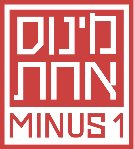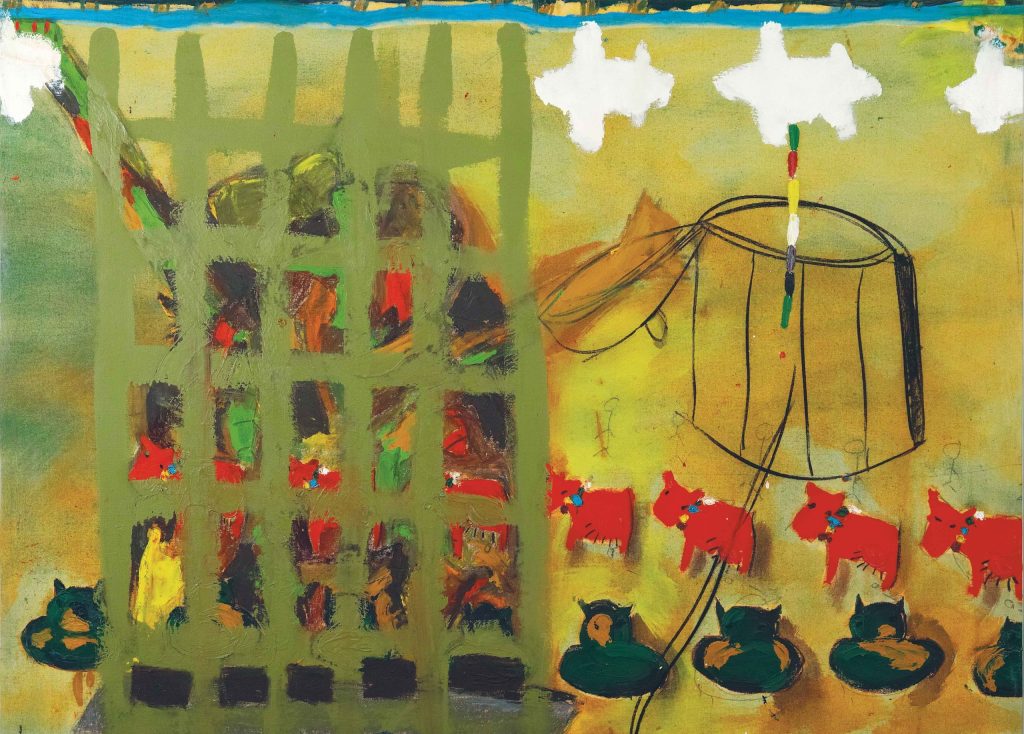This exhibition is devoted to an historical moment in which a singular art school flourished in Tel Aviv. The Kalisher Higher School of Art operated from 1965 to 2012. In its first years it was located in the area of the city’s Central Bus Station, before moving in 1974 to 5 Kalisher Street, after which it was popularly known as the “Kalisher school.” Its uniqueness, which was laid down from its inception by its founder, Arie Margoshilski, derives from a fusion of pedagogic rigidity, which viewed painting-from-observation as a necessary stage in artistic development, and a pluralistic approach, which perceived the fundamentals of traditional painting as a foundation upon which students could grow to embrace whatever artistic expression they might choose. But even more than this, the school’s pluralism was reflected in the applicants who passed through its gates.
The 1980s and the beginning of the 1990s, which were the years of the school’s blossoming, were also the period in which the road to becoming a successful artist passed through the Bezalel Academy and Hamidrasha Art School, and through them alone. However, whereas the students who enrolled in those two institutions were for the most part from the mainstream of Israeli society, Kalisher attracted a different and far more heterogeneous student body. They came from other backgrounds and from off the beaten track: the religiously observant alongside students from the land-settlement movement, residents of outlying areas and of so-called “development towns,” people from Arab society and new immigrants. All of them were characterized by a certain peripherality – geographical, national, ethnic, gender or in personality – which categorized them as “not belonging.”
Kalisher accepted them and allowed them to be self-expressive in an intimate, protective atmosphere. If there is a recurrent theme in conversations with the school’s graduates, it is the spirit of freedom together with the support and the encouragement of independent creation that was dominant in the school. In these years, the faculty included artists and lecturers from the front rank of the Israel art field; Kalisher’s singularity thus also stemmed from an exceptional fusion of a small, alternative school and teachers who were leading artists.
The exhibition focuses on a group of Kalisher graduates whose work is part of the Haaretz Collection and who attended the school during the period that began with the appointment of Zvi Ben Dov as its director (1977) until the start of the school building’s renovation (around 1993), a span of about 16 years that is considered the end of a chapter in the life of the institution. The works in the exhibition do not date from the artists’ period of study; some of the paintings were done in the years immediately after graduation, others far later. Stylistically, each artist has their own language, but thematically there are several connecting threads between the works, and the paintings can be viewed through the prism of their subjects. A division along these lines recalls the connection that existed in the school itself between subjects that characterize the teaching method of painting-from-observation – such as still life, portrait and interior – and newer subjects which derive from painting-from-photography or from the imagination, where the source of the images is drawn from the here-and-now, from the news pages, from popular culture or from the biographical story. But if a division of this sort will be effective in indicating the lines of similarity between the works according to different categories, a deeper look will show that they all have something in common: an interplay between the traditional and the contemporary, the universal and the local, and the personal and the political.
Efrat Livny
Closing – Saturday, 15th October 2022

